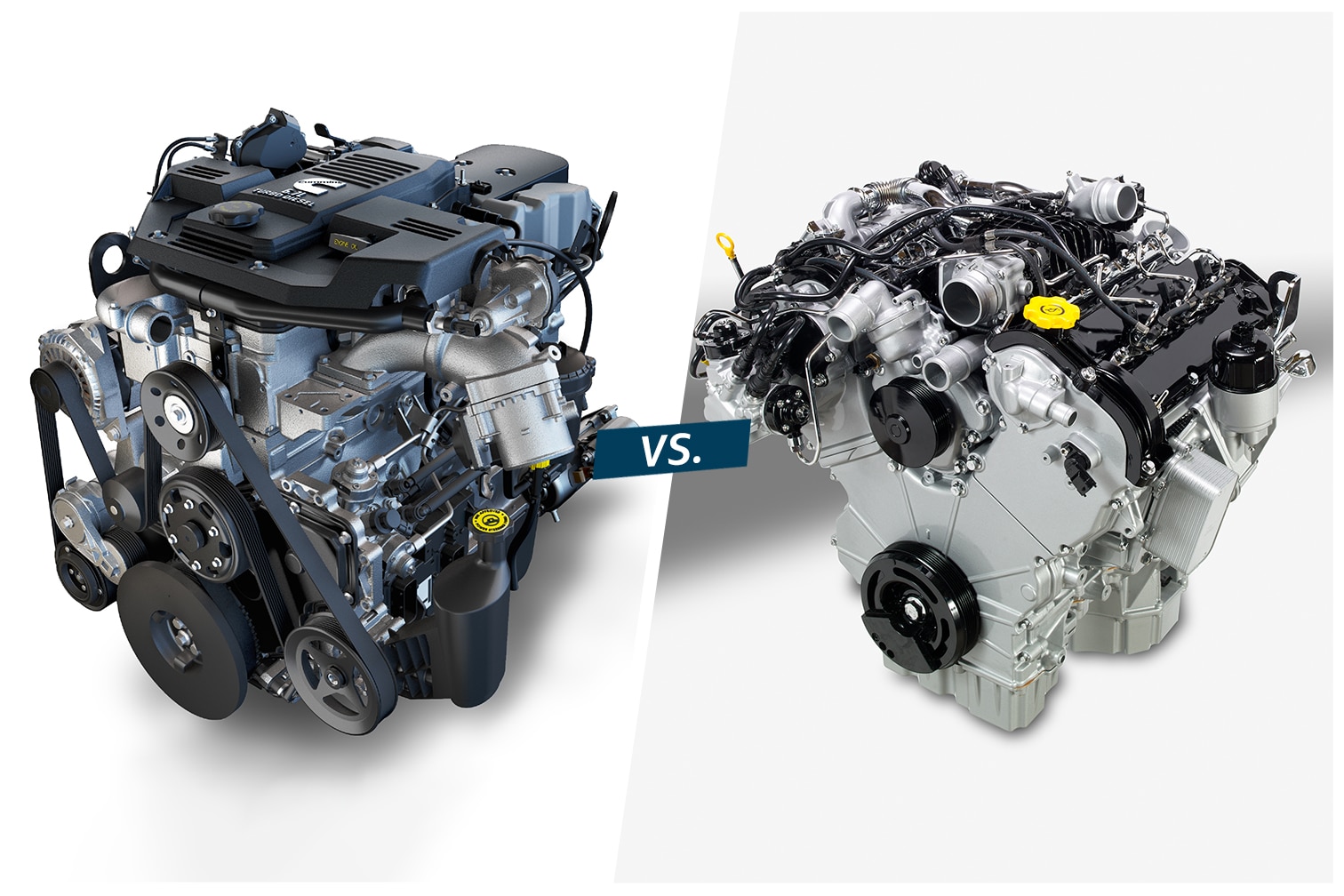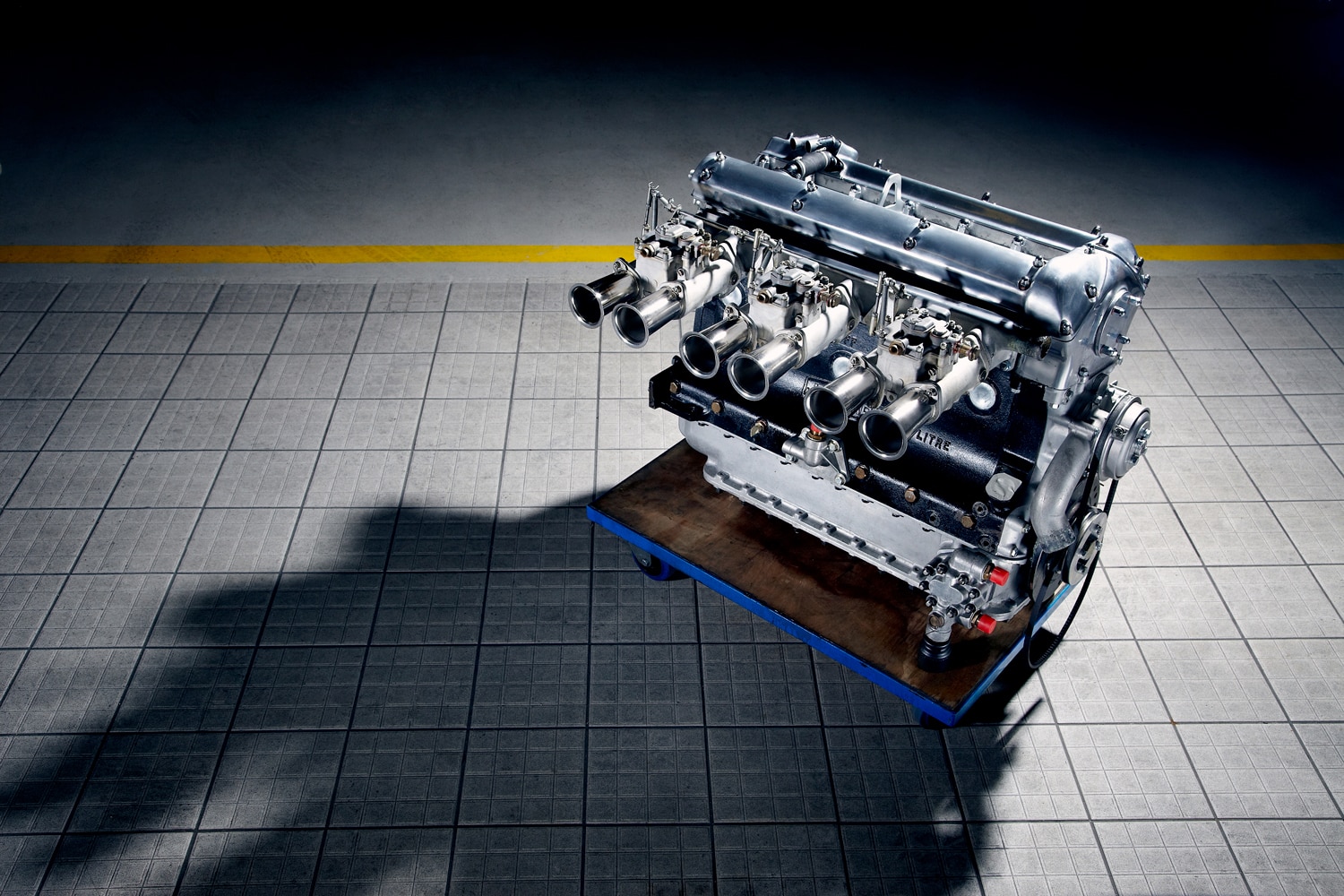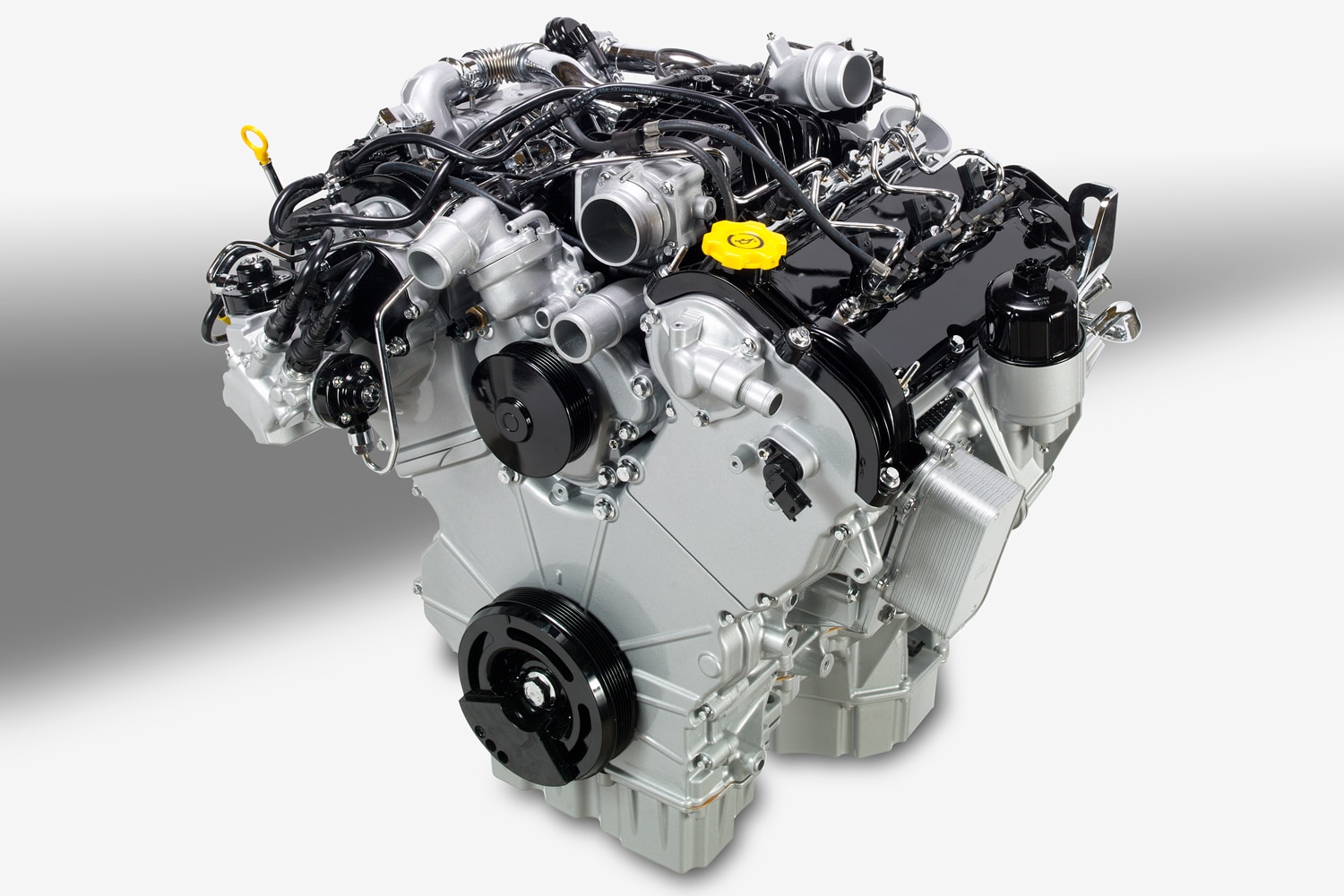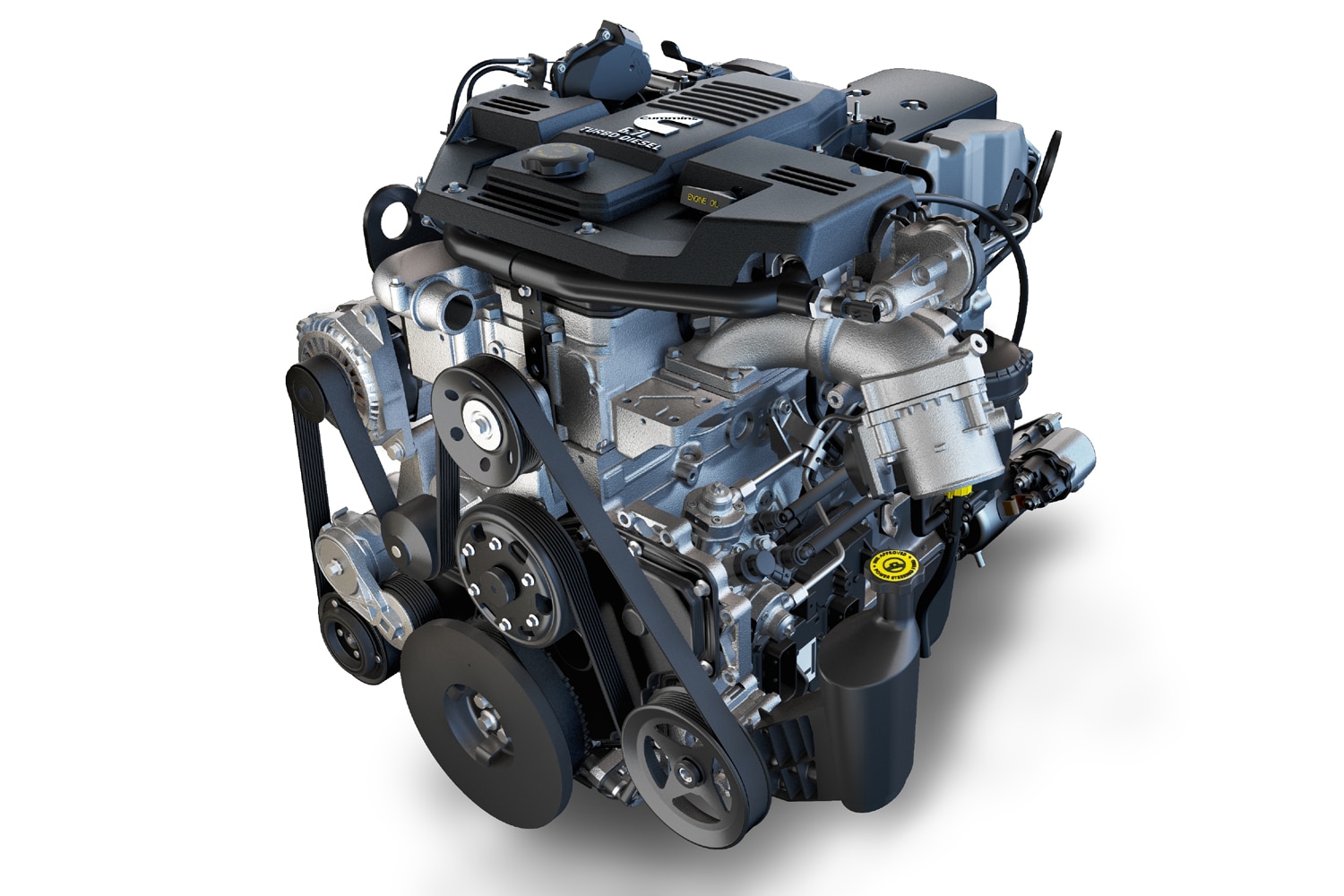Compared: Inline 6 vs. V6 Engines
Inline 6-cylinder engines are making a comeback, thanks to technology improvements and downsizing. The V6 engine still holds sway, however.
 Ram
Ram
Six-cylinder engines are common in today's mid- and full-size vehicles. Today the V6 is the most common arrangement for having six cylinders, but for decades inline 6 or straight-six engines were the only choice. Some enthusiasts have a preference between the inline or the "V" arrangement, but for manufacturers, it is the design, cost, performance, and drivetrain type that influences which one to use. We'll take you through some history and explain each, and why you might want one over another.
 Jaguar
Jaguar
Inline 6 Engine Origin and Attributes
Jaguar produced an exceptional engine, which was fitted under the long hood of the iconic E Type, and that engine is pictured above. Automotive manufacturing began growing exponentially in the early 1900s with automakers developing larger engines to power them. The inline six-cylinder came along as part of the natural progression in automotive engineering.
The first commercially available engines were in an inline four-cylinder arrangement, so adding on two more was a natural next step to increase power. The inline six-cylinder features a half-dozen cylinders fitted in consecutive order along the crankcase with all pistons driving a
Simple Design
For manufacturers today, the design is straightforward to manufacture. It requires one cylinder head, a single gasket, and half the number of many other parts when compared to a V6. A shorter timing belt and superior lubrication are other advantages of note.
From a performance perspective, inline six-cylinder engines often produce more torque at lower speeds than V6s. Further, an inline six-cylinder is usually quieter and has less vibration than a V6.
 Ram
Ram
V6 Engine Development and Attributes
Almost 50 years passed before the first V6 engine arrived in 1950. They developed somewhat out of necessity as inline engines consume more space in the engine bay as they're almost always placed longitudinally, which is to say in a line from front to back, driving the rear wheels. On the other hand, V6 engines are more compact with three cylinders on each of the two banks connected in the middle. The V6 can be positioned to easily drive the front wheels or the rear wheels. Since the engine is only three cylinders long, but wider, a V6 can be fitted into a vehicle in roughly the same length engine bay as a four-cylinder, letting smaller vehicles benefit from the greater power usually available with six-cylinder engines.
Inline 6 vs V6 Engine Differences
There are some important differences between inline-six and V6 engines. For example, vibration problems trouble V6 engines due to the number of cylinders on each bank. Different manufacturers have solved this problem in different ways, reducing the downsides over time, and aiding the more widespread adoption of the arrangement.
Also drawing differences between inline-six vs V6 is that the V-arrangement often weighs less, achieves more torque at higher speeds, boasts reduced friction, and is usually more efficient. They're also useful in front-wheel-drive vehicles where an inline-six engine is simply too long to easily fit and attach to a transmission when driving the front wheels.
Preferred Engine Design
The trend toward front-wheel drive picked up pace in the 1960s and remains the dominant design for modern vehicles other than pickup trucks, most luxury models, and traditional sport utility vehicles. Therefore, the V6 is the preference for manufacturers today. Moreover, while the inline-six is only found in the front of a vehicle, V6 engines can be placed in the front, center, or rear of the vehicle.
Inline 6 vs V6 Considerations
Although it appears the V6 engine has won the day, the inline-six still has its fans and a few manufacturers satisfying that craving. Indeed, BMW has produced an inline-six since the late 1960s, while Mercedes-Benz, Jaguar, and Land Rover added gas inline-six engines in the late 2010s. The Toyota GR Supra uses one supplied by BMW.
Why this trend? As manufacturers lighten their vehicles, a turbocharged inline-six becomes a compelling alternative to the big V8s found in some rear-wheel-drive models. To work with all-wheel drive, manufacturers connect the driveshaft from the gearbox to the front axle to motivate them.
Ram supplies a pair of diesel engines, one in each configuration, for their regular-duty and heavy-duty trucks: the EcoDiesel V6 and the Cummins I6. The V6 is an efficient option for the Ram 1500, while the I6 is one of the most powerful engines available to consumers.
 Ram
Ram
One Popular Exception to the Rule
One place the inline-six configuration lives on well is in the diesel segment. The most famous and popular model inline-six diesel is the 6.7L Cummins turbodiesel powering Ram trucks, which is capable of producing more than 1,000 lb.-ft. of torque right off the showroom floor. Another available engine is the turbocharged 3.0L Duramax Diesel used in select Chevrolet, GMC, and Cadillac applications, such as the Chevrolet Silverado and Suburban SUV. Though the V6 is still the choice for almost every manufacturer making a six-cylinder engine, the inline-six isn't going away as it continues to occupy an important niche in the company of contemporary models.
Written by humans.
Edited by humans.
 Matt Keegan
Matt KeeganMatt Keegan is a lifelong car enthusiast, having “driven” his first real car at the tender age of five while sitting on his father’s lap. As soon as he acquired his license, he began exploring the open road and tinkering under the hood to fix the inevitable leaky radiator, broken belt, or mess with a stuck fan clutch. It is those experiences that convinced him to stick with writing and make good friends with mechanics. Matt regularly reviews new vehicles, advises friends and families on their next car purchase, and keeps his pulse on the automotive industry. His bucket list drive is navigating Alaska’s Dalton Highway and finishing that trip with a dip in the Arctic Ocean. In July, of course.
Related articles
View more related articles